I’m not sure if it’s handy homeowners or negligent contractors who are responsible, but we find the same installation defects on water softeners over and over again. The installation instructions for water softeners are pretty much the same for all of the different manufacturers, so the information I’m giving here should apply to just about any water softener.
Missing ground clamp
All of the metallic water distribution pipes in the home are supposed to be bonded; in other words, they’re all supposed to be able to touch each other. If the water pipes in a home aren’t bonded, what will happen if an energized (aka ‘hot’) wire comes in contact with one of the pipes? All of the plumbing fixtures and other pipes connected will become silently energized. When everything is properly bonded and there is a proper ground jumper at the water meter, this can’t happen.
We find this bonding compromised by a plastic by-pass valve at a ton of the water softeners we inspect. If the water softener manufacturer provides a plastic by-pass valve, they will also provide a ground clamp that needs to be installed on the water pipes coming into and going out of the water softener.
Even if you don’t have that clamp from the manufacturer, it’s a very simple fix to correct this. Just get a couple of bonding clamps and run a thick copper wire between them. The minimum size of this wire will depend upon the size of your electric service, but you’ll probably be safe with a 4 gauge wire, which is suitable for services up to 200 amps.
If you have non-metallic water distribution piping in your home, such as PEX or CPVC, there’s no need for a clamp. We’re always amused when we find the clamp installed anyway 😀
Improper drain hose
The drain hose that comes from the water softener needs to terminate in a manner that won’t create a potential cross-connection between the potable water and anything else… such as sewer water. This is usually achieved with an air gap; this is just a literal gap between the end of the discharge pipe and the drain receptor, whether it’s a floor drain, standpipe, or laundry sink. The only problem with the diagram below, which is what one of the water softener manufacturers includes in their installation manual, is that water will shoot all over the place. When water softeners discharge water, the water flows fast. It doesn’t dribble out.
The photo below is an example of an air gap at the floor drain. Even if the floor drain were to back up with sewer water, the water wouldn’t come in contact with the end of the discharge hose. Also, note the cover for the floor drain has been cut out a little bit; if this wasn’t done, the discharge from the water softener would probably splash water all over the place.
There are also a handful of pre-manufactured solutions for this, such as the Handy GaP pictured below.
Softened water provided to the outside faucets
While this isn’t technically a defect, it’s bad practice to run softened water to the outside faucets. Lawns and plants don’t need softened water, and this is a tremendous waste of softened water. When a water softener is installed, the water supply pipes for the outside faucets should be connected upstream of the water softener.
It’s also standard practice to connect the cold water for the kitchen sink upstream of the water softener… not that I agree with this practice. Plumbers do this because softened water has a higher sodium content.
How much sodium is added to softened water? According to Pure Water Products, LLC, the amount of sodium added by a water softener depends on how hard the water was to start with. Here in Maple Grove, the water hardness ranges from 22 grains per gallon (gpg) to 25 gpg. To make it really simple, they say to multiply the grains of hardness by 1.89, and you have the total mg of sodium that is added to water through the softening process in one 8 oz glass of water. In other words, an 8 oz glass of softened Maple Grove water would have 25 x 1.89 mg of sodium, or about 50 mg.
To put that into perspective, a single slice of Brownberry® whole grain Outnut bread contains 150 mg of sodium. It’s not nothing, and if you drink 50 glasses of water a day (or whatever number the experts are recommending these days), that can add up to a lot of sodium. Maybe.
In the photo below, you can see that all the water for the house passes through the water softener; this is a wasteful installation that should be corrected. Because this was an unfinished room, it would be quite simple to run un-softened water to the outside faucets and kitchen sink.
And here’s what it looks like when a house is plumbed with the sprinkler system, outside faucets, and kitchen faucet bypassed:
Powered by an extension cord
This is probably the biggest “no duh” defect we find with water softeners. Everyone knows that extension cords aren’t supposed to be used as a substitute for permanent wiring. If an outlet is needed, it should be installed by an electrician.
That concludes my list of the most common water softener installation defects. While I’m on the topic of water softeners though, here’s one more piece of information; this list gives the water hardness for most cities in the Twin Cities metro area. I keep this list with me, and use it as a reference whenever a client asks me about the water hardness in their city. Water Hardness Chart 2020

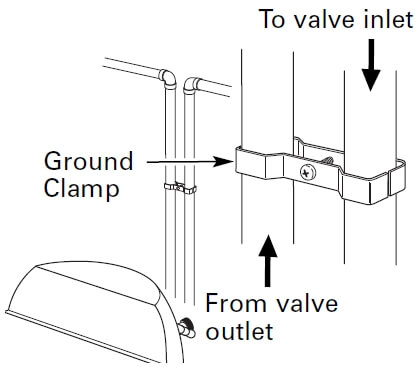
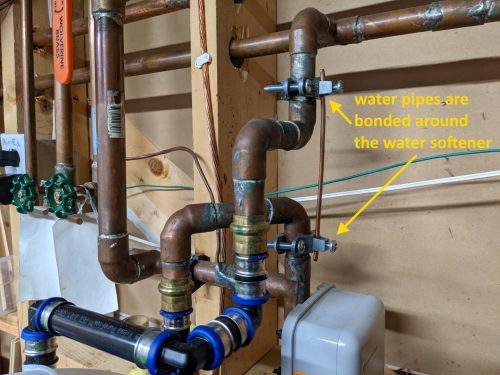
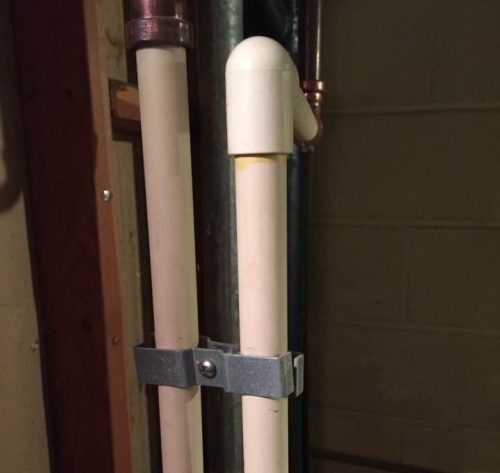
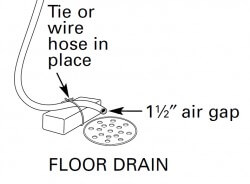
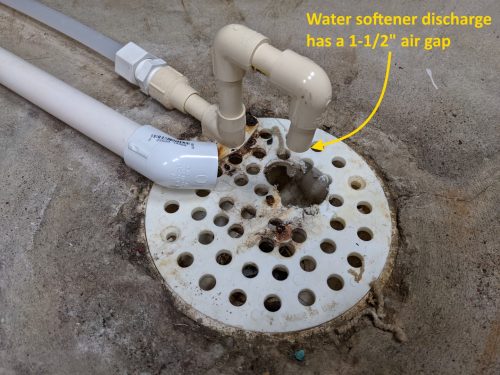
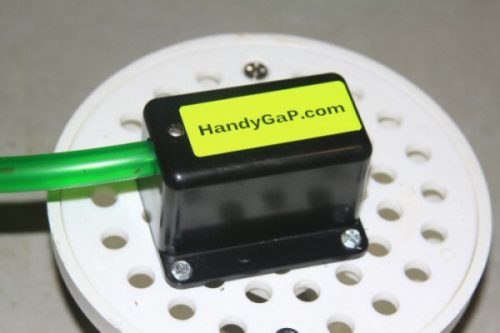
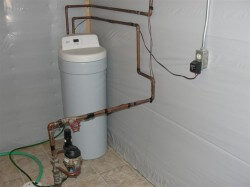
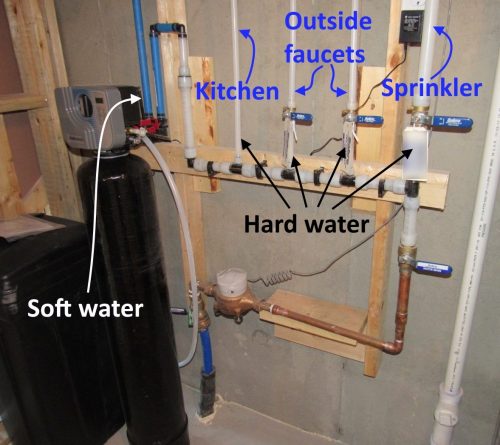
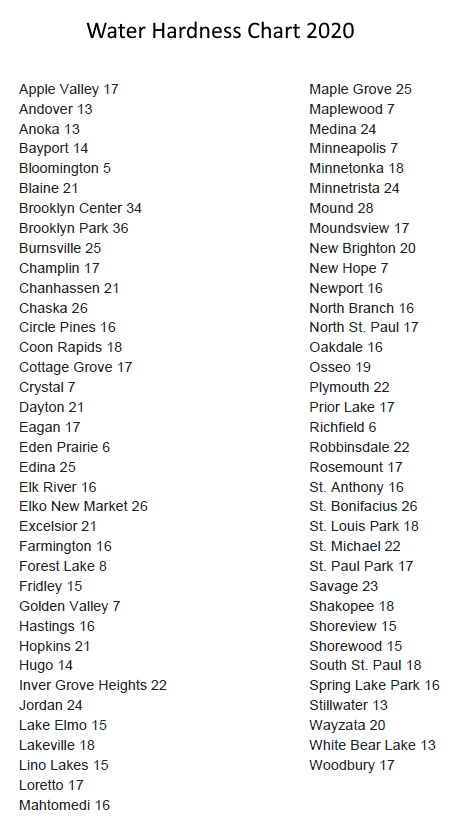
Scott Zeiger
August 10, 2021, 9:36 am
Great information Reuban. Thank you
Ian Robertson
August 11, 2021, 3:49 pm
Great and thorough as always Reuban. I see those same ones all the time